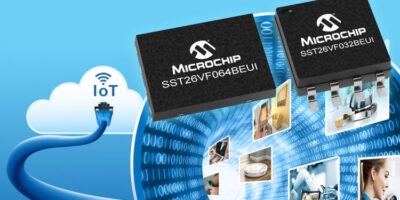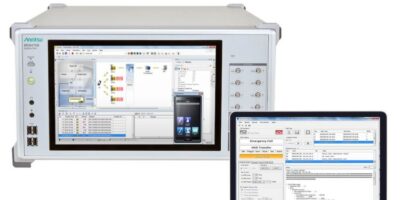SMART Global Holdings, Inc., is entering the embedded computing market through two acquisitions: Artesyn Embedded Computing, the embedded computing business of Artesyn Embedded Technologies, and Inforce Computing.
The acquisitions are expected to be immediately accretive to EPS.
“These acquisitions represent another milestone in SMART Global’s strategy to drive growth and earnings through synergistic M&A,” commented Ajay Shah, Chairman and Chief Executive Officer of SMART Global Holdings.
“These will become part of the SMART Specialty Computing business as the products and customers added are complementary to our existing business, expand SMART’s target market opportunity and enable the company to cross-sell its existing products to new customers.”
Artesyn Embedded Computing
Artesyn Embedded Computing, Inc., a private company based in Arizona, is a leading provider of embedded computing solutions based on open standards such as ATCA®, VMEbus, PCI Express and computer-on-module, with a large portfolio of long-life-cycle products, strong supplier partnerships and long-standing customer relationships.
“Artesyn EC strengthens our product offerings and high-reliability technologies in embedded computing requirements,” noted Mr. Shah, “We are also excited to have Artesyn EC’s experienced engineering, sales and marketing teams join SMART Global.”
As part of the SMART Specialty Compute and Storage Solutions (SCSS) line of business it will serve a broad range of Defense, Industrial IoT (IIoT), Edge Computing, and Communications OEM customers. Artesyn Embedded Computing will become SMART Embedded Computing and leverage our core operational capabilities to gain a foothold at scale in embedded computing markets.
Stephen Dow, President of Artesyn EC, said: “Today’s announcement marks the beginning of an exciting new chapter for Artesyn EC. We look forward to being able to leverage SMART’s established global operations and supply chain, and to invest in our sales channels to enable growth and meet the needs of our expanding markets.”
SMART has agreed to acquire Artesyn EC for $80 million in cash from the balance sheet. Performance-based considerations of approximately $10 million also will be paid if certain agreed-upon targets are achieved over the second half of this calendar year.
Inforce Computing
SMART Global Holdings also announced today that it has acquired Inforce Computing, Inc., a privately held provider of modular embedded computing and IoT solutions targeting applications in Medical Imaging, Video Conferencing, AR/VR Computing, IIoT, Commercial Drones and Robotics.
“We look forward to leveraging Inforce’s engineering talent to further develop leading edge system-on-module and single board computer products for IoT applications,” added Mr. Shah.
Inforce Computing, based in California, is a fast-growing developer of high-performance production-ready ARM® ISA-based embedded computing platforms for IoT applications. Enhanced by key partnerships with companies such as Qualcomm and Marvell, Inforce designs and manufactures Snapdragon™ and Marvell® processor-based system-on-modules (SOMs), single board computers (SBCs), and development kits. Inforce’s embedded technologies are enabling the next generation of connected devices.
“Joining SMART is a strong next step in the progression of Inforce,” said Jagat Acharya, Chief Executive Officer of Inforce.
“By joining SMART, we will be able to scale up and serve our OEM customers’ high-volume needs through SMART’s global reach and to accelerate our investments in sales, marketing, engineering and new product development.”
SMART has agreed to acquire Inforce for a total of $12 million in cash and equity consideration. Inforce will also become a part of SCSS.
O’Melveny & Myers LLP is acting as legal counsel to SMART Global Holdings on these transactions.
Forward-Looking Statements
This release contains, and statements made during the above-referenced conference call will contain “forward-looking statements” including among other things, statements regarding future events and the future financial performance of SMART, Artesyn EC and Inforce and statements regarding growth drivers in certain industries and markets. These statements are only predictions and may differ materially from actual future events or results due to a variety of factors, including but not limited to: business and economic conditions and growth trends in the technology industry and in SMART’s, Artesyn EC’s and Inforce’s customers and end markets; global economic conditions and uncertainties in the geopolitical environment; overall information technology spending; the success of our strategic initiatives including additional investments in acquisitions and new products; our success at integrating acquisitions and achieving synergies; deterioration in customer relationships; production or manufacturing difficulties; competitive factors; technological changes; difficulties with or delays in the introduction of new products; slowing or contraction of growth in the computing and storage markets; prices for the end products of our customers; fluctuations in material costs and availability; deterioration in or loss of relations with any of our limited number of key vendors and customers; and other factors and risks detailed in SMART’s filings with the Securities and Exchange Commission. Such factors and risks as outlined above and in such filings may not constitute all factors and risks that could cause actual results of SMART to be materially different from the historical results and/or from any future results or outcomes expressed or implied by such forward-looking statements. SMART, Artesyn EC and Inforce operate in continually changing business environments and new factors emerge from time to time. SMART cannot predict such factors, nor can it assess the impact, if any, from such factors on SMART, Artesyn EC or Inforce, or on the combined results. Accordingly, investors are cautioned not to place undue reliance on any forward-looking statements. Forward-looking statements should not be relied upon as a prediction of actual results. These forward-looking statements are made as of today, and SMART does not intend, and has no obligation, to update or revise any forward-looking statements in order to reflect events or circumstances that may arise after the date of this press release, except as required by law.
About SMART Global Holdings
The SMART family of companies, headquartered in the U.S., are leading designers and manufacturers of systems and sub-system/modules serving industry for over 30 years. Through SMART Modular Technologies, the company has been supplying memory modules and sub-system solutions to a broad customer base of leading OEMs in Enterprise Computing, Networking and Communications, Enterprise Storage, Mobile and Industrial Automation markets.







